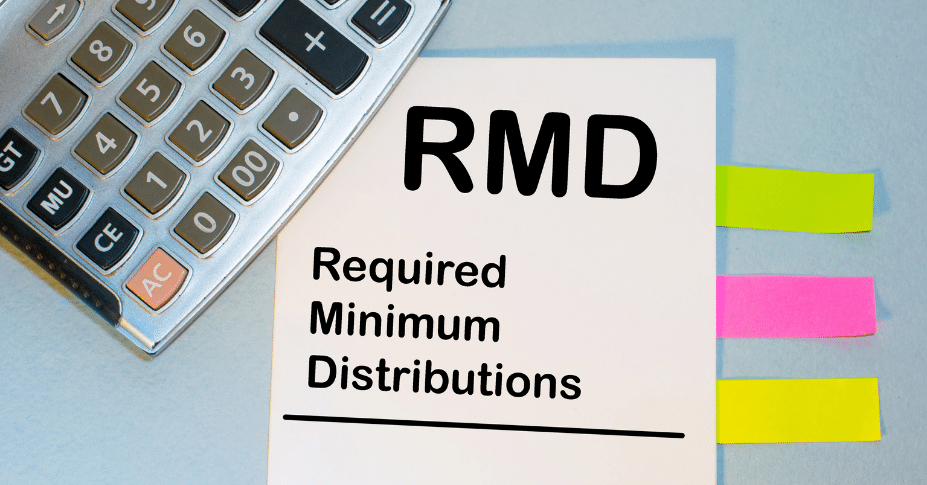Did you know that certain types of retirement accounts require that you withdraw money from them each year after you reach a certain age? These withdrawals are known as required minimum distributions or RMDs. If you have a retirement account, it’s important to learn whether you need to make these distributions, as well as when and how to do it.
What You Need to Know About RMDs
1. What is a required minimum distribution?
Retirement account owners with Traditional IRA, SEP IRA, SIMPLE IRA, 401(k), and 457(b) plans are required to begin taking minimum distributions from the account when they reach age 72 and continue taking these annual minimum distributions for as long as they hold the account.
2. When do I have to begin taking RMDs?
You must begin taking withdrawals from your tax-deferred retirement savings account such as your Traditional IRA, SEP IRA, and SIMPLE IRA, when you reach a specified age. For many years, this age was 70 ½. The age was adjusted to 72 under the SECURE Act in 2020, and then more recently adjusted under the SECURE Act 2.0 in 2023.
If you turned 72 after December 31, 2022, the RMD age is 73. In 2033, the RMD age will move to 75. (Roth IRAs do not require a distribution during the account owner’s lifetime.)
3. What is the deadline to take a required minimum distribution?
An account holder’s first Required Minimum Distribution must be taken by April 1 of the year following when the account owner turns 73; this is known as the “required beginning date.” Each year thereafter, the distribution must be taken by December 31. The calculation (discussed below) is based off the balance reported on the account as of December 31 of the prior year.
4. I have multiple Traditional IRAs. Do I have to take an RMD from each of them each year?
While you must calculate the RMD for each IRA you own, you may choose to withdraw the total amount from just one account (or from a combination of accounts of your choosing). It does not matter whether these accounts are held with the same custodian or with multiple custodians.
However, if you own a 401(k) or 457(b) plan, you must take RMDs separately from those accounts.
5. How do I calculate my required minimum distribution amount?
You have a few options for calculating your RMD:
- Ask your CPA, tax professional, or financial advisor.
- Visit the IRS website and identify the correct life expectancy table
- Divide the total balance of your account as of December 31 of the prior year, by the life expectancy divisor.
- Use an online calculator, such as the IRS.gov worksheets or one from the SEC website.
Example RMD Calculation
John Smith is 75 years old and currently has an Equity Trust Traditional IRA and another Traditional IRA with another custodian. From his account statements, John Smith locates his total balance as of December 31 of the prior year:
Equity Trust IRA: $100,000
IRA elsewhere: $50,000
John Smith is married, his spouse is 4 years younger, and is the sole beneficiary listed on both his accounts.
John would use the Uniform Lifetime Table III. Locate the divisor (Distribution Period) for 75 years of age. In this case, it is 24.6. Divide each account balance by the divisor to determine the amount of the distribution from each account.
Equity Trust IRA: $100,000/24.6 = $4,065.04
IRA elsewhere: $50,000/24.6 = $2,032.52
John Smith’s Equity Trust IRA holds $50,000 in private stock in a company, $50,000 in precious metals, and no cash. John does not want to sell the metals, private stock, or take a distribution of the assets “in-kind.” What are his options?
Let’s assume John’s other IRA holds money-market and mutual funds which can be easily liquidated. John adds $4,065.04 + $2,032.52 = $6,097.56. John satisfies the total RMD by distributing the $6,097.56 from his IRA elsewhere with the balance of $50,000.
The IRS provides worksheets to help you calculate your distribution amount.
6. May I withdraw more than the RMD amount from my account?
Yes, once you’ve reached age 59½ you’re able to withdraw any amount you wish from your account penalty-free.
7. What if my IRA funds are tied in up illiquid assets such as real estate or gold?
As noted above, if you have multiple IRAs you may choose to take your total required distribution from just one account. If one account holds illiquid assets and the other holds liquid assets, it may be easier to take a withdrawal from the account with liquid assets.
If your IRA’s value is primarily in alternative (and illiquid) assets, such as real estate, promissory notes, or gold, you may be faced with a challenge. Consulting with a qualified tax professional or financial advisor can assist you in evaluating your options to determine the best approach. When your account holds an asset such as real estate, potential options might include:
- Selling the entire asset from the IRA and taking the RMD from the cash proceeds of the sale
- Distributing only a portion of the asset as part of the RMD and keeping the remaining portion in the account: This would require a title change and re-registration of the asset with the custodian
If you choose to distribute a portion of the asset personally, there are processes to make sure the asset’s value is up to date and you have the asset re-titled to reflect the change of ownership. Contact Equity Trust to determine the process and documentation needed to facilitate the distribution, revaluation, or sale of the asset.
Again, a financial professional can review the aspects of each option with you.
8. Can I send my RMD to a qualifying charity?
Yes, it is possible to send up to $100,000 of your RMD to charity, provided the charity qualifies. This is known as a Qualified Charitable Distribution (QCD). When processing a QCD from your custodian, make sure you complete your distribution request properly, and the funds never pass through your personal bank accounts, but rather funds are deposited directly with the qualifying charity.
9. What are the rules about taking distributions from inherited IRAs?
Inherited IRA rules can be complex. It is recommended to work closely with your CPA or other financial professional to discuss these rules and how you can best plan for leaving your retirement accounts to your loved ones, or if you inherited an IRA, what your options are. These rules have been recently modified under the SECURE Act.
10. How can I easily take distributions from my Equity Trust IRA?
Provided you have the funds available, you can take a distribution from your Equity Trust Traditional IRA, SEP IRA, or SIMPLE IRA through our online account management system myEQUITY: simply navigate to Money Movement > Distribution to get started. Watch this myEQUITY distribution tutorial video for more information.
11. Where can I find more information on RMDs?
Visit the IRS website for the details and rules regarding required minimum distributions.







